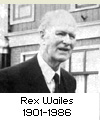Mills and people
The subject of molinology, just like any other, has its notable personae. People featured in our databases include millers, millwrights and the inventors who pioneered various technological developments. The diverse interests and personalities of “mill people”, as well as enriching the subject for the researcher, help to explain the reasons behind the modification, restoration and recording of mill structures.
Notable mill people include innovators such as Edmund Lee, a Lancastrian with an eye for the automation of mills. In 1745 he patented the fantail, an ingenious automatic device that could be fitted to every type of windmill. The fantail could turn the entire mill around to face the direction of the wind, relieving the miller of this strenuous task. Some millers became famous for things other than milling. For example George Green, the miller at Sneinton near Nottingham, published An Essay on the application of mathematical analysis to the theories of electricity and magnetism, described later as “the beginning of mathematical physics in England”. This publication introduced mathematicians to the concept of Green’s functions and Green’s Theory.

During the 1920s and 1930s, public concern about the disappearance of Britain’s heritage of mills began to be voiced through the press. Individuals from several professions joined forces with the Society for the Protection of Ancient Buildings to begin Britain’s mill preservation movement. The engineer Rex Wailes spearheaded this initiative. From 1923 until his death in 1986, Rex visited, recorded and wrote about many hundreds of mills throughout the world. These efforts stimulated further activity. Armed with notebooks and Box Brownie cameras, enthusiasts such as Donald Muggeridge, Syd Simmons and Harry Meyer scoured the country in search of mills. In doing so, they created some of the earliest records of windmills and watermills now forming the basis of the Mills Archive.

Material created by mill people who have continued the work of these pioneers is also held by the Archive. Prime examples include Arthur C. Smith, author of the County windmills series, who clocked 20,232 miles of cycling in search of mills between 1969 and 1991. Another example of a mill author is Peter Dolman, who died in 2002. A skilled molinologist, Peter’s work also involved practical mill conservation and the authentic repair of mill machinery and structures to working condition. He excelled in the field of historical research and recording, using archival material to reconstruct traditional mill features within his repairs. His collection was donated to us on his death and is a major feature of our holdings.
Details of these leading figures and other significant mill people can be located through the Archive’s comprehensive search engines; you can start on the Explore menu above.

